by Cathie Maglio
Since March is Women’s History Month, I thought it would be appropriate to recognize some women mathematicians who went against social norms and studied a “man’s” subject. I’m glad there were women brave enough to break down the barriers so that more women could enter STEM fields. I was surprised to find that women have actually been contributing to the field of mathematics since the 4th century. Here are some of them and their contributions to this field.
Hypatia (c. 355 – 415)
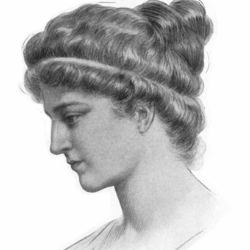
Hypatia was the first woman known to have taught mathematics. Her father was a famous mathematician in Alexandria. He taught his daughter math and astronomy and then sent her to Athens to study the teachings of Plato and Aristotle. Hypatia wrote commentaries and lectured on math, astronomy, and philosophy. She was murdered by a mob of Christian zealots not for religious reasons but as purely political revenge in a war of factions.
Public Domain: Drawn by Jules Maurice Gaspard (1862–1919) – Elbert Hubbard, “Hypatia”, in Little Journeys to the Homes of Great Teachers, v.23 #4, East Aurora, New York : The Roycrofters, 1908 (375 p. 2 v. ports. 21 cm) https://en.wikipedia.org/wiki/Hypatia#/media/File:Hypatia_portrait.png
Emilie Du Chatelet (1706 – 1749)
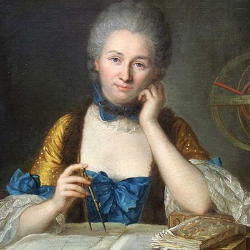
Emilie Du Chatelet was born in Paris in a home that entertained scientists and mathematicians. Her mother thought math was “unladylike” but her father encouraged her to study it. She used her math skills for gambling to finance her purchase of lab materials and math books. Though a frequent traveler, she always managed to find ample time to study mathematics and write scientific articles. From 1745 until her death Emilie worked on translating Isaac Newton’s Principia, adding her own commentaries and clarifying the principles in the original work.
Public Domain: Émilie du Châtelet, by Maurice Quentin de La Tour
Sophie Germain (1776 – 1831)
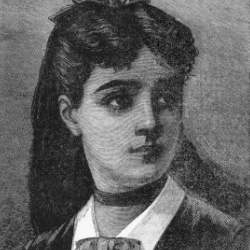
Sophie Germain was only 13 when she developed an interest in mathematics. Sophie lived during the time of the French Revolution. Since it was not safe to be out exploring the streets, she turned to exploring her father’s library instead. She taught herself Latin and Greek and read some of his mathematical works. She studied secretly at the École Polytechnique using the name of a previously enrolled male student. This worked until the teachers began to notice an improvement in the gentleman’s math skills. She is best known for her work on Fermat’s Last Theorem, considered at the time to be the most challenging mathematical puzzle. She proposed a new way of looking at the problem. Sophie was the first woman to win a prize from the Paris Academy of Sciences for writing about elastic theory. This prize is now known as the Sophie Germain Prize.
Public Domain: Sophie Germain à 14 ans. Illustration provenant de histoire du socialisme, vers 1880
Mary Somerville (1780 – 1872)

Mary Somerville was born in Scotland. She was not very interested in academics as a child. However, when she was 16 she saw an algebra symbol in a puzzle. From then on she became fascinated with math and began studying on her own. She taught herself Latin so she could read earlier versions of Euclid, the Greek mathematician of the 3rd and 4th centuries BC. Through her correspondence with William Wallace, a professor of math at the University of Edinburgh, Mary solved mathematical problems posed in contests and won a silver prize in 1811. She also had an interest in astronomy and translated a famous book titled Celestial Mechanics by Simon de Laplace. Her commentaries on this work earned her an honorary membership in the Royal Astronomical Society.
Public Domain: Thomas Phillips – Mary Fairfax, Mrs William Somerville, 1780 – 1872. Writer on science – Google Art Project.jpg, Created: 1834 date QS:P571,+1834-00-00T00:00:00Z/9
Florence Nightingale (1820 – 1910)
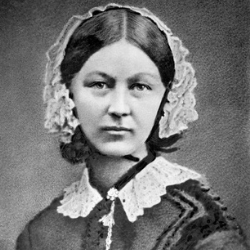
Florence Nightingale is best known as a nurse and social reformer, but a less known contribution continues to save lives. In her efforts to improve the survival rates of hospital patients, Florence became a statistician. As part of her hospital reform, she began collecting statistics. The data she gathered indicated that a lack of sanitation was the primary reason for high mortality rates. This discovery led to making hospitals cleaner and safer. Florence also designed charts that were easy to read. Statistics had only rarely been presented in this form before. She invented a new graph called the coxcomb, a variation of the pie chart. She said the graph was designed “to affect thro’ the Eyes what we fail to convey to the public through their word-proof ears.” Her creative work with data pioneered the way for the field of applied statistics.
Public Domain: Florence Nightingale, photograph by Henry Hering (1814-1893) – circa 1860, National Portrait Gallery, London
Emmy Noether (1882 – 1935)

Emmy Noether was the daughter of a well-known German math professor. She wanted to follow in his footsteps, but at that time women were not admitted to the university at Erlangen in Bavaria. She studied and became certified to teach English and French, but she still desired a degree in mathematics. When Erlangen finally admitted women in 1904, Emmy studied and received a doctorate in mathematics. In 1918, she proved two theorems, one of which is now known as “Noether’s Theorem.” Her dream of teaching math finally became a reality in 1922 at Göttingen. However, her career was short-lived due to anti-Semitism in Germany and she fled to the United States in 1933. She taught at Bryn Mawr College until her death in 1935.
Public Domain: Portrait of Emmy Noether Date before 1910: Emmy Noether (1882-1935), Unknown author
Dorothy Johnson Vaughn (1910 – 2008)
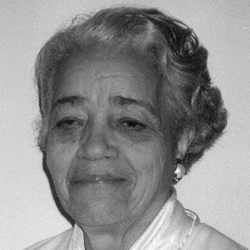
Dorothy Johnson Vaughn (1910 – 2008) was one of the legendary “human computers” – a group of mathematically proficient women who calculated a variety of scientific and mathematical data at NASA. Her contributions are chronicled, along with Katherine Johnson, in the movie Hidden Figures. After working as a math teacher, Dorothy joined NACA (the predecessor of NASA) in 1943. She was promoted to lead the division’s segregated work group West Area Computers. She became an expert in coding languages such as FORTRAN. She described working on space research as “the cutting edge of something very exciting.”
Public Domain: Dorothy Vaughan, NASA on The Commons – Flickr https://www.flickr.com/photos/nasacommons/34646435630/in/photostream/
Maryam Mirzakhani (1977 – 2017)
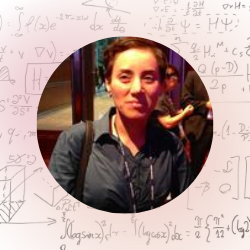
Maryam Mirzakhani was not interested in math as a child. She wanted to be a writer. It was not until her last year in high school that she decided to pursue mathematics. In 2014, Maryam became the first woman and the first Iranian honored with the prestigious Field Medal, awarded for her work in hyperbolic geometry, a non-Euclidean geometry used to explore concepts of space and time. She taught at Princeton and Stanford.
As a female mathematician, I am grateful to these women who paved the way so that I could follow my passion without having to overcome the kind of obstacles they encountered. I can encourage my students to study math without worrying about their gender. The contributions of these women to science and to social liberalization deserve our notice and our respect.
Creative Commons: Attribution-ShareAlike 2.0 Germany (CC BY-SA 2.0 DE). Wikimedia Foundation has received an e-mail confirming that the copyright holder has approved publication under the terms mentioned on this page. This correspondence has been reviewed by an OTRS member and stored in our permission archive. The correspondence is available to trusted volunteers as ticket #2008042410024381.
Cathie Maglio is a college math teacher and a JFYNet Learning Specialist.
Encore post, originially posted 3/16/21
HOW ARE WE DOING? In our pursuit to serve up content that matters to you, we ask that you take a couple of minutes to let us know how we’re doing? Please click here to be navigated to our JFYNet Satisfaction Survey. Thank you!

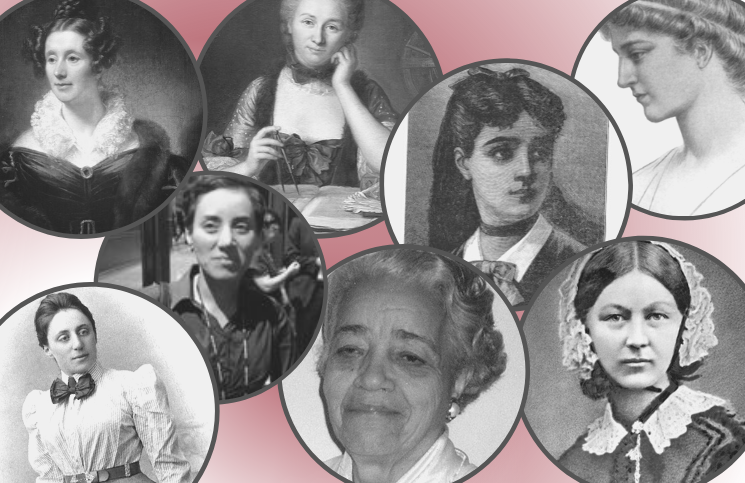




2 Responses
I loved this and passed it on to our Math teachers, Cathie.
Thank you, Cathie! Their grit, determination, and dedication to their studies/research/publications have an infinite impact… on us all. #AmazingWomen